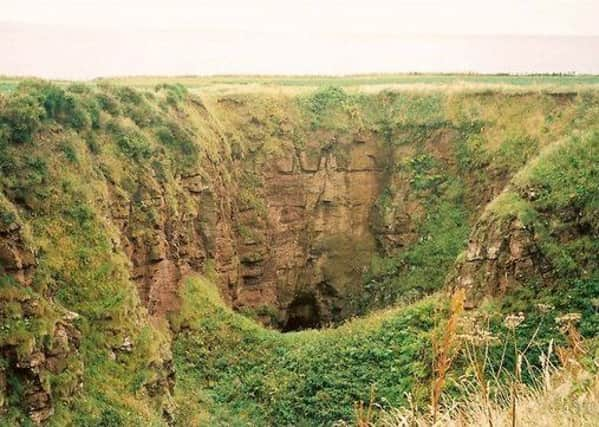Video: The mystery of Gaylet Pot blowhole


The opening to the hollow can be found some 120 feet above sea level in a farmer’s field which borders the North Sea close to Meg’s Craig, by Auchmithie in Angus.
Following harvest, the full extent of the natural phenomenon is revealed. Measuring some 150 ft across, the ground falls away to reveal a deep channel which connects to the sea.
Advertisement
Hide AdAdvertisement
Hide AdOn a day of high easterly winds, water is pushed up through a cavern into the Gaylet Pot as the heaving seas find an escape route.
A Gazeteer of Scotland account from 1868 gives a colourful description of the unique blowhole.
It said: “The sea enters the cavern, and takes up to the foot of the shaft the fluctuations of the tide; and when it is urged by an easterly wind, it bursts in at high water with amazing impetuosity, surges and roars with a noise which only the great depth and contractedness of the shaft prevent from being heard at a considerable distance, and then recedes with proportionate violence, and makes a bellowing exit from the cavern’s mouth.”
Thomas Milner also encountered Gaylet Pot in his travels for his 1874 book The British Islands, their Physical Geography and Natural History.
After entering the field, he said: “On reaching the edge, the eyes look down a precipice about 150 feet in depth , and sees the waves dashing along the bottom.
“Descending by a somewhat precarious path, it is found to be a long tunnel-like cavern communicating with the sea.
“Through the deep gloom of the passage, the sunlight may be seen playing beyond and now and then a white sail passes the opening as if flitting across the field of a telescope.”
Advertisement
Hide AdAdvertisement
Hide AdThe North Sea tides which bash these searing red sandstone cliffs are unforgiving.
In 1880, eight lives were lost when a Norwegian wooden ship NEPTUNUS smashed on the rocks near Gaylet Pot.
It had been carrying pit props from Oslo for Leith but became stranded on February 16 of that year.
The following month, remains of one of the seamen were discovered on the shore.
The vessel broke up in just 15 minutes, such was the force of the water.
On theory is that Gaylet Pot was formed when the roof fell in on a large sea cave.